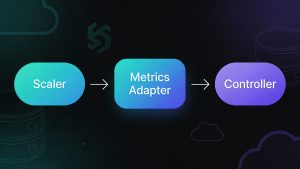Frontend development is one of those skills where creativity meets technology. In a country like India, where businesses are booming in fields such as fintech, edtech, and others, the demand for frontend developers is set to rise.
In this blog, we’ll look into the typical career progression of a front-end developer in India’s tech industry—from entry-level to senior roles. Each stage like Junior, Mid-Level, Senior, and Lead/Principal and the roles, responsibilities, required skills, and performance expectations. By the end of this blog, you will have a clear understanding of what it takes to grow in this field and what to expect at each step of the journey.
So, Let’s get started.
Junior Frontend Developer
Junior frontend developer is the entry level position, ideal for those are just graduated from college or at an intern level. Most of the time, you work with the supervision of your seniors who guide you with tasks.
At this level, you are expected to know foundational skills like how the web works, and protocols like HTTP, TCP, etc. Your responsibilities here are straightforward, like converting a FIGMA design to frontend code or fixing UI bugs that often come with responsiveness, etc.
Essential skills and tools for a junior developer include:
- Fundamentals: Strong grasp of HTML5, CSS3, and vanilla JavaScript (ES6+).
- Frameworks/Libraries: Basic familiarity with one frontend framework (e.g. React, Angular, or Vue.js) or library, often learned on the job.
- Version Control & Tools: Comfortable using Git/GitHub, code editors (VS Code), and browser developer tools.
- Other: Understanding responsive design principles, standard CSS approaches such as Flexbox and Grid, and basic knowledge of package managers like npm or Yarn.
Mid-Level Frontend Developer
Mid-Level Frontend Developer usually has about 2–5 years of experience. At this stage, you will work more independently on moderate-to-complex features and begin influencing technical decisions.
Here your responsibilities include, contributing to the project architecture, organizing code modules, optimizing web page performance, and ensuring responsive, cross-browser design. You will also interact with UI/UX designers to improve the overall user experience.
Essential skills and tools for a Mid-Level frontend developer include:
- Advanced JavaScript: Strong skills in modern JS, TypeScript, and understanding asynchronous programming.
- Frontend Frameworks: You should be well versed in one or more frameworks like Next.js, Nuxt.js or any other popular frameworks.
- Testing & Build: You should also have a good understanding of frontend testing tools (Jest, Mocha, Selenium) and build tools (Webpack, Babel).
- Version Control & DevOps: Solid Git workflows, experience with CI/CD pipelines and deployment basics.
As a mid-level developer, you are expected to deliver features that work correctly and with good performance; the code should meet the team’s standards with minimal rework.
Senior Frontend Developer
A Senior Frontend Developer usually has 4–8 years of experience. Seniors are technically sound and they make architecture decisions, ensure code quality, and drive innovation.
Here you will think in terms of systems, like for a large application. Writing code is no longer the big deal here. Here you have to design the frontend architecture of the web application. You should make decisions like which approach should you follow, monolithic architecture or micro frontends. You will be able to decide from your years of experience by understanding the business requirements.
Essential skills and tools for a senior frontend developer include:
- Expert Level Technologies: As a senior developer, you should have in-depth expertise in multiple frameworks (React, Angular, Vue) and libraries. You may also work with adjacent technologies like React Native, and GraphQL for data queries.
- Performance & Accessibility: You should have a good understanding of profiling web apps (Chrome Lighthouse), improving load speed (code splitting, lazy loading), and ensuring accessibility (WCAG guidelines).
- Architecture & Design: You should know design patterns (Flux/Redux, MVVM), scalable CSS architecture (BEM, CSS-in-JS), and progressive web app (PWA) principles.
Senior developers often have to decide about architect design, choosing tradeoffs and lead major project features from planning through release,
Lead/Principal Frontend Developer
Lead or principal-level roles (often 8+ years of experience) involve strategic leadership and architecture across projects or products. At this stage, you typically manage or mentor multiple teams and shape the technology roadmap.
Some of the key responsibilities of a Lead developer include:
- Technical Vision: Defining front-end standards and best practices for the entire organization (coding conventions, security guidelines, performance budgets).
- Architecture Oversight: Designing the overall front-end architecture for multiple applications or a platform (e.g. micro-frontend strategy, shared component libraries).
- Team Leadership: Leading a team of developers (or multiple teams), coordinating cross-team efforts, and ensuring timely delivery of all front-end modules.
- Stakeholder Engagement: Working with senior management, product leaders, and other stakeholders to align technology decisions with business goals.
As a Lead or Principal Developer, you will have to ensure that the frontend supports business key performance indicators like user engagement, load metrics, frontend performance and making high-level decisions that improve revenue or user satisfaction.
Skillsets to have as a frontend developer
As a frontend developer, you have to be well versed in certain frontend technologies and this section we will look deep into it. Frontend is not about putting your UI elements here and there; it is the single point of contact for your web application. Even if you have a strong backend, if your app is not usable by your potential user, then it’s not useful. Let’s see the technologies you should know:
HTML and CSS
This is the bare minimum you should know if you want to become a front-end developer. You should know Semantic HTML, which helps you improve accessibility, developer experience, and user experience. CSS is a vast topic. It has more than 200 properties and values. You should have an understanding of what to use when, like CSS Flexbox, Grid Layout, etc. You should also know about Media Queries, which help you make responsive websites.
JavaScript and TypeScript
JavaScript is the language of the web. If you want to write frontend logic like validation, handle user interactions, make API calls, or dynamically update the DOM, JavaScript will help you do that. You should be comfortable with core concepts like variables, functions, loops, arrays, objects, and most importantly, asynchronous programming using Promises and async/await. You also need to understand the DOM (Document Object Model) and how to manipulate it efficiently. You should know how events work, the event loop, how closures behave, and how to debug using browser dev tools. TypeScript is a cherry on top. It’s an extension of JavaScript that gives you features like static typing. JavaScript is a loosely typed language, and it is easy to write erroneous code. TypeScript will help you catch those errors during development.
Module Bundlers (Webpack, Vite, Parcel)
These days, you rarely write raw HTML, CSS, and JavaScript and directly push it to production. Instead, we use module bundlers that compile, optimize, and bundle all your files into a format the browser can understand. Webpack is the most popular one and it takes all your JavaScript files, images, styles, and even fonts, and bundles them together efficiently. You should at least have a good understanding of its basics like entry, output, loaders, and plugins. Vite is a newer and faster bundler that’s becoming increasingly popular, especially with React and Vue projects. It uses native ES modules during development and bundles using Rollup for production. It’s blazing fast and has a much simpler config compared to Webpack.
WebSockets and Real-Time Communication
Most web applications work on a request-response model, you request data and wait for the server to respond. But sometimes, you need to have a persistent communication channel that the normal HTTP protocol can’t provide. That’s where WebSockets come in. WebSockets create a persistent connection between the client and server, allowing bi-directional communication. Once the connection is established, the server can push updates to the browser without waiting for the client to request it again and again. You don’t need to build everything from scratch, you can use libraries like Socket.IO in JavaScript makes working with WebSockets super easy. Even applications like WhatsApp use Websockets to exchange messages.
State Management
When your application is small, you can pass data between components using props. But as the app grows, managing the state becomes more complex You need to lift the state up, share it between components, and preserve it across pages. Even lifting the states has its cons like you might be passing the states to components that don’t need to know about those.
This is where state management comes in.
Here are a few tools to know:
- React’s Context API – good for small-to-medium scale state sharing
- Redux – a robust and scalable way to manage complex states, it’s often an overkill for simple apps
- Zustand, Jotai, Recoil – newer libraries that are simpler, more lightweight, and great alternatives to Redux
- React Query / TanStack Query – excellent for server state management, like fetching and caching API data
Rendering Strategies: CSR, SSR, SSG, and ISR
Rendering is how your frontend content gets displayed in the browser. You should understand rendering strategies as many modern frameworks like Next.js give you different strategies that can help you optimise your application.
- CSR (Client-Side Rendering): The browser loads a blank HTML page and runs JavaScript to fill in the content. This is common in React SPAs. Fast after load but slower initial render.
- SSR (Server-Side Rendering): HTML is generated on the server for every request. Great for SEO and faster first loads. Used in frameworks like Next.js.
- SSG (Static Site Generation): Pages are pre-rendered at build time. It will be fast and perfect for blogs and marketing pages.
- ISR (Incremental Static Regeneration): It combines the benefits of SSG and SSR. You build pages statically and rebuild them in the background as needed.
You should understand when to use which approach. Choosing the right one can improve your costs, user experience, and SEO of your website.
Apart from this, you should also have an understanding of web security. Even though the backend handles most of the heavy lifting, knowing how frontend security works helps you build safer applications. You should be aware of some key concepts like Cross-Site Scripting, Cross-Site Request Forgery, HTTPS & Secure Headers, etc.
Conclusion
Thanks for checking out this blog! In this post, we discussed the various career paths and technologies you need to master as a frontend developer and more. The more you work with these frontend technologies, the more you understand how they come together to create seamless, interactive, and high-performing user experiences.
Keep coding.



